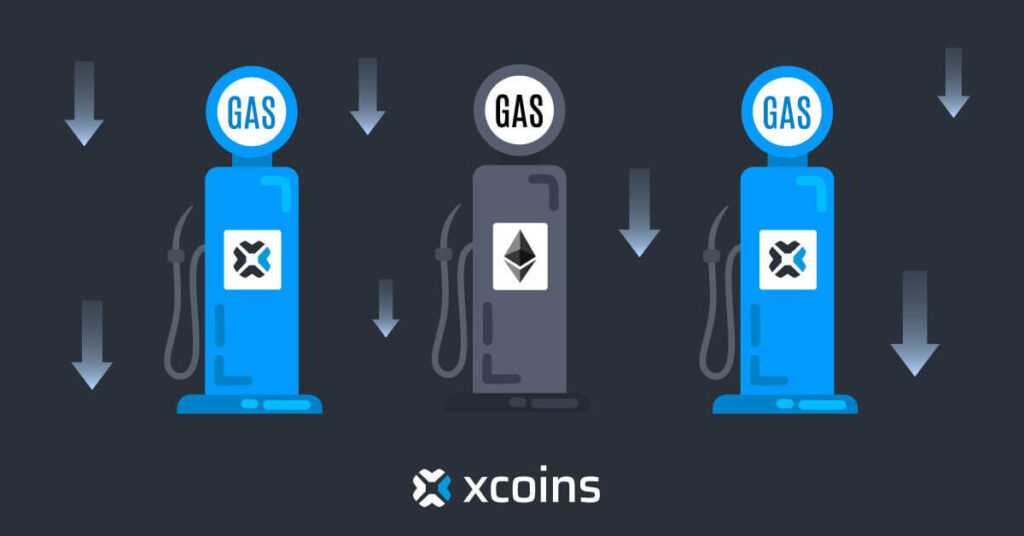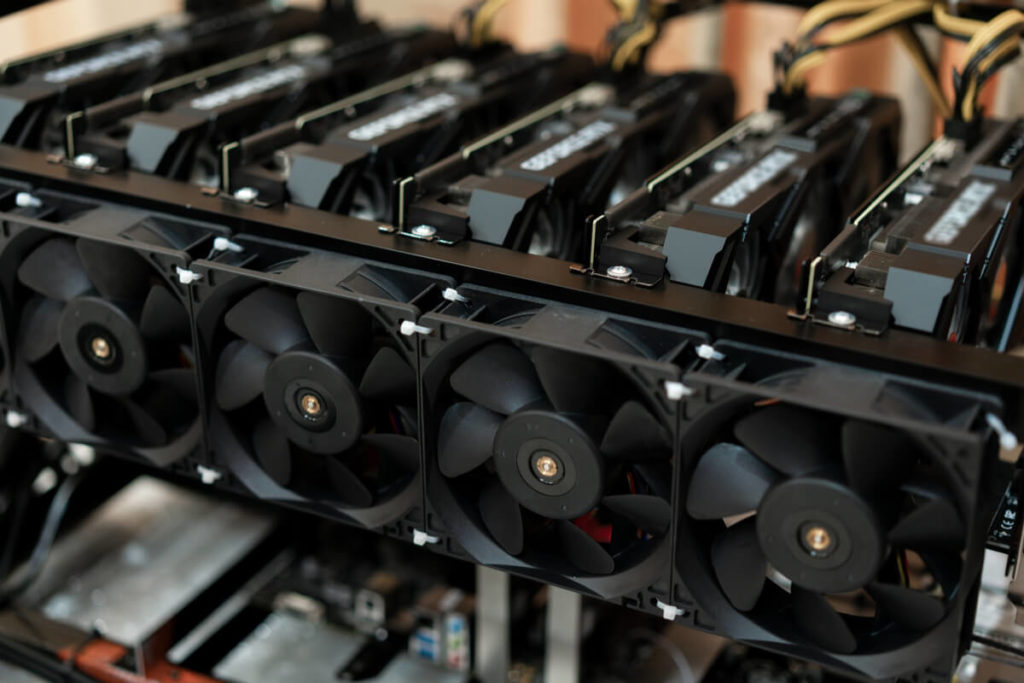
What Are Ethereum Gas Fees and Why Are They Coming Down?
At long last, Ethereum’s transaction or “gas” fees, are starting to fall. Why are Eth fees coming down and what does this mean for the future of the currency?
When crypto euphoria was at its peak in 2021, there were a couple of gripes that rained on the parade – one of the biggest was Ethereum’s then very high gas fees. The token’s transaction costs were the talk of Twitter for months as NFT-fever took hold, but these complaints have started waning as fees have cooled down.
Ethereum, the number two crypto by market cap, has become well known for being an expensive commodity to trade so people have been pleasantly surprised by the dramatic fee decline. What’s causing this and what does this tell us about Ethereum’s future?
What are gas fees?
Gas fees are the transaction fees you pay to interact with Ethereum’s network. These fees are paid to the miners in exchange for the computing energy they use to validate your transaction and include it on the blockchain. For example, if you want to send a friend $100 on the Ethereum blockchain, you’ll need to spend an additional, non-refundable amount of Ether (which is Ethereum’s native currency) for the money to get to them.

While these fees can get high when the network is congested, they’re typically a tiny fraction of 1 Ether, so they’re denominated in a unit called “wei”, where 1 Ether is equal to 1 quintillion wei (or 1 followed by 18 zeros). Gas fees in particular are denoted in “gwei” (a combination of the words “giga” and “wei”) which is a little easier to relate to Ether because 1 Ether is equal to 1 billion gwei. So, if the $100 you want to send to your friend requires a fee of 400 gwei, you’ll be paying an additional 0.0000005 Ether or $0.0010 at the time of writing).
How are gas fees calculated?
The way that Ethereum gas fees are calculated has been significantly simplified following Ethereum’s EIP-1559 upgrade in August 2021. Now, the total fee you pay in gwei is calculated as follows: gas limit x (base fee + priority fee).
Gas limit
This is the amount you’re willing to pay for your transaction to be completed. You set this value yourself, but it’s important to be careful when doing so because different types of interactions require different gas limits. If you set your gas limit too low for your particular transaction, it won’t be completed and your gas fee won’t be returned because the miner has already done the required proof-of-work.
Base fee
Base fees were introduced with the EIP-1559 upgrade. While you can adjust your gas limit, the base fee is the minimum fee that’s required for your transaction to be included in a block. This fee is based on transaction demand and how many users are interacting with the network at the time. As part of the upgrade, base fees are burned once the transaction is completed successfully.
Priority fee
If you want your transaction to be completed faster and you need to skip the queue, you can pay a priority fee, or tip, as an incentive to the miners. Miners can see which transactions include tips so are able to prioritize them to increase their earnings.
Why are Ethereum gas fees coming down?
Ethereum fees hit a six-month low on February 27 2022, with the average transaction fee down to 0.0039 ETH ($10.26) per transfer. Just seven weeks earlier (January 10 2022) the average fee was $52.46, meaning they’d decreased by a startling 80.4%.
There’s not one singular reason for gas fees declining. We’ve pinpointed a few, closely-related reasons that explain why fees have changed.
Ethereum NFT trading has slumped
NFTs have taken center stage in recent months, gaining exposure through celebrity endorsements and wildly popular collections, such as the Bored Ape Yacht Club (BAYC). Ethereum is well-positioned as the main digital asset used to mint and trade them, and anyone hoping to do so will more than likely be using OpenSea, the biggest Ethereum NFT marketplace.
In January 2022, OpenSea reported a record $5 billion in monthly sales volume. With that in mind, it’s unsurprising that Opensea is also, single-handedly, the largest generator of Ethereum gas fees.
However, since reaching these heights in January, volume on the site has steadily decreased. In fact, between February 1 and February 8 2022, daily volume tumbled from $248 million down to $118 million which is the driving factor behind the recent decrease in gas fees. In the same week, Ethereum’s price actually increased from $2,790.07 to $3,118.98, which we would typically expect to cause a spike in gas fees, if analyzed in isolation.
The chart shows the steady decrease in OpenSea’s daily volume between December 7 2021 and March 6 2022 (Source: Dune Analytics).
DeFi has taken a backseat
It’s clear that the slump in Ethereum NFT trading is the main reason for fees declining, but DeFi has its part to play. Ethereum has a front-row seat in the DeFi revolution and is often tapped by institutions as the fail-safe blockchain for smart contracts.
However, the total amount locked away in smart contracts has decreased by approximately $30 billion in the last three months, down to $68.9 billion. This can mainly be put down to global socioeconomic factors which have impacted financial markets as a whole, driving people away from riskier investments, back to safe havens like gold and bitcoin.
The rise of Layer 1 and 2 alternatives
You may be doubting that the DeFi market and NFT trading has slowed down, especially if you’ve come across the infinite animal JPEGs being minted at every turn on your social media over recent weeks. Well, it’s important to note that Ethereum is no longer the only player in these spaces.
Layer 1 alternatives (including Avalanche and Solana) and Layer 2 solutions (such as Polygon, which has a sidechain on Ethereum’s network) all offer cheaper fees and faster transaction speeds than the Ethereum mainnet at the moment because there’s less congestion on their networks, meaning NFT transactions are cheaper. Although Ethereum still has a stronghold on the market, its market share in the DeFi space has descended from 97% to 58% in just over a year (at the time of writing).
EIP-1559 upgrade taking effect
EIP-1559, also known as the London hardfork, was a huge step in the execution of Ethereum’s Layer 2, and part of that upgrade involved introducing a token burning mechanism to help stabilize fees and integrate deflationary economics into the Ethereum network.
As well as establishing a clearer fee structure, the network has imposed an important rule on base fees. They can only be increased or decreased by 12.5% after each successful block, based on whether the block before it was above or below the gas target outlined by Ethereum’s developers. The idea behind doing this is to keep fees stable for longer. Introducing these mechanisms has shielded Ethereum from its previously sporadic, short-term fee hikes.
What does this mean for Ethereum’s future?
Ethereum’s gas fees were a huge pain point within the crypto industry, and its developers have been working hard to address it, which is part of the reason for the London hard fork last year. Having more stable fees is good for the longevity and future utility of the asset.
That aside, the cryptocurrency market is currently experiencing a cooling period in general following its unprecedented rally in 2021, so less congestion means lower fees. The clear benefit is that cheaper fees give those transacting in crypto an opportunity to do so for less. Given the current low gas fees and discounted crypto prices, now could be a great time to stock up on Ethereum at bargain basement prices.
As always, this article does not constitute financial advice and you should be sure to do your own research and consult a professional financial advisor before making any investment decision.
To stay up to date on all things crypto, like Xcoins on Facebook, and follow us on Twitter, Instagram, and LinkedIn.

